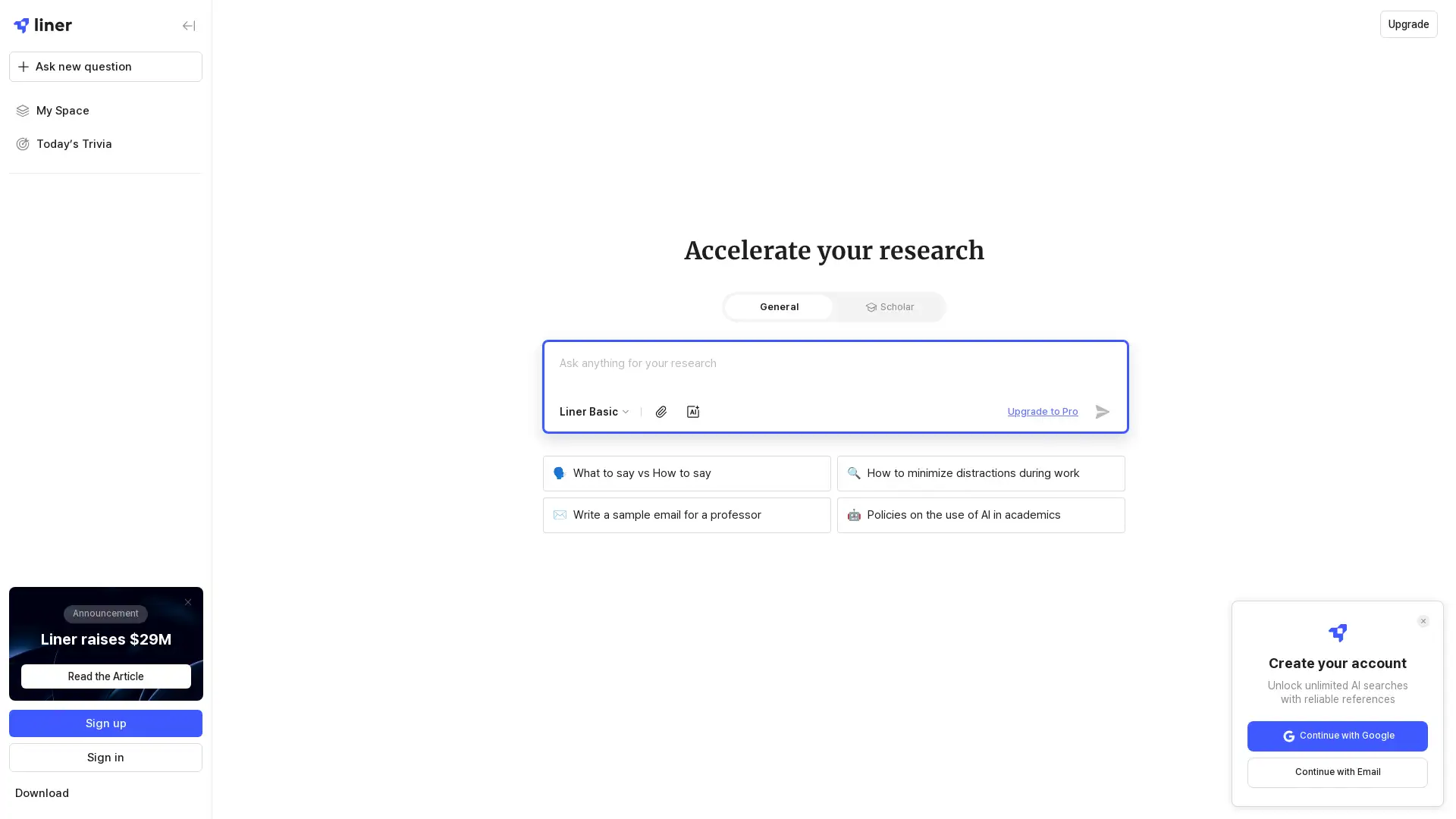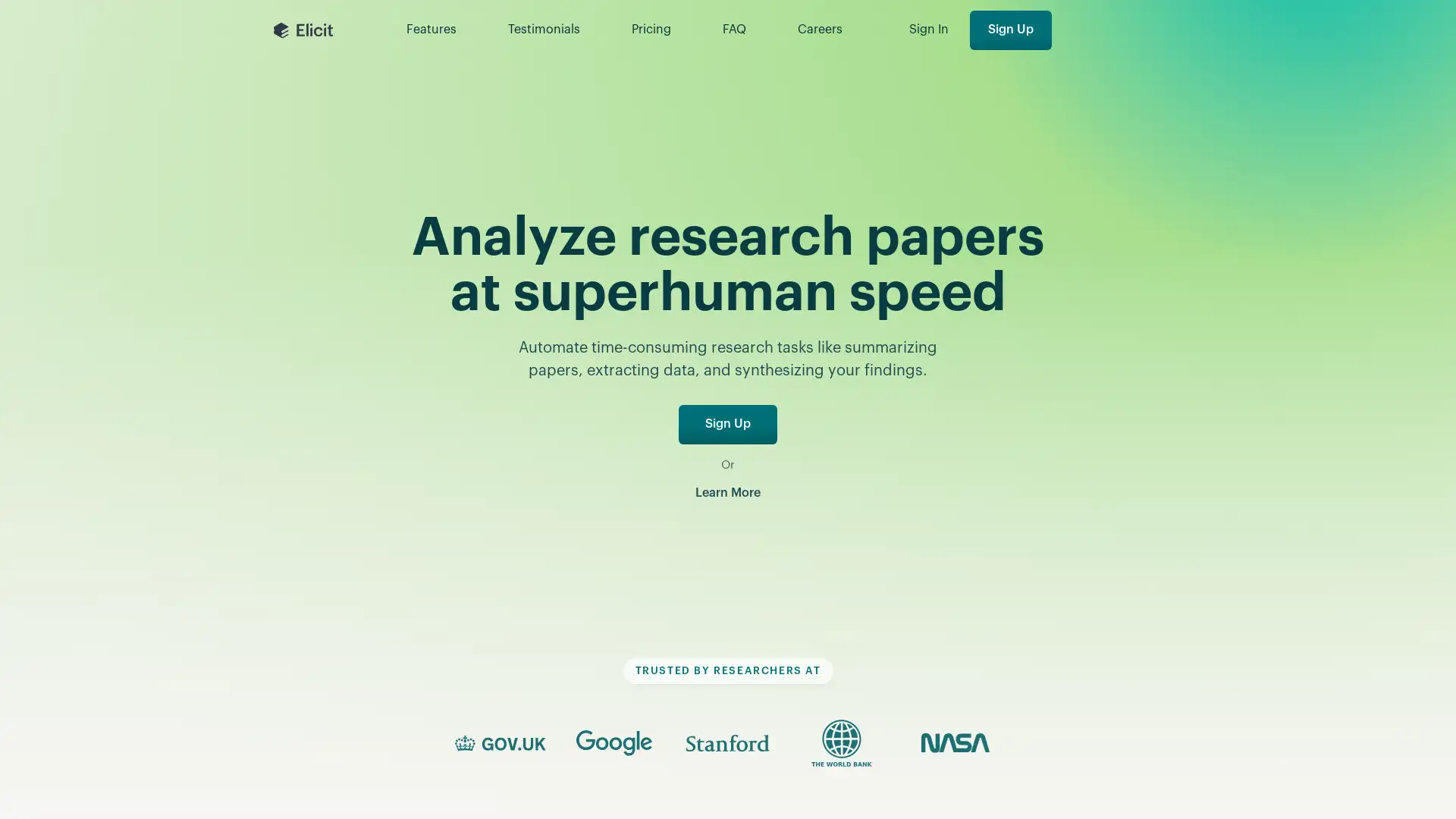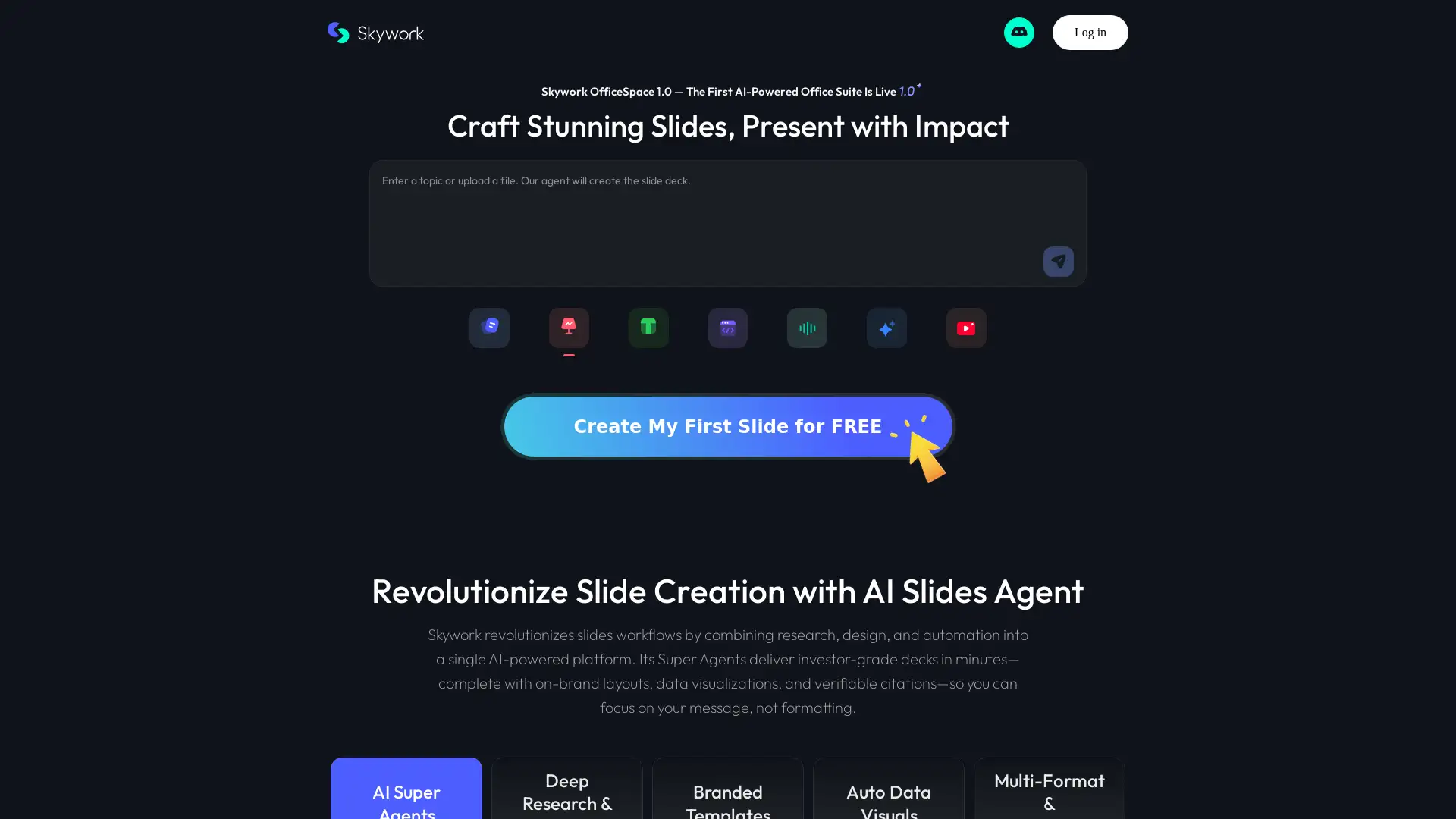Best 3 AI Tools for Research Automation in 2025
Liner AI, Elicit AI, Skywork Super Agent are among the best paid and free Research Automation tools available.
Understanding Research Automation AI: What It Is and Why It Matters
Research Automation AI tools are purpose-built artificial intelligence applications designed to streamline, accelerate, and scale research-related tasks. They automate repetitive steps — literature discovery, data extraction, summarization, slide and report generation, citation management, experiment tracking, and preliminary analysis — enabling researchers to focus on insight and strategy. In this context, these tools are adapted to work with domain-specific inputs, formats, and workflows so outcomes are relevant to academic, scientific, market, or internal R&D research. They deliver tailored solutions ranging from one-click AI-powered slides in minutes to deep integrations that produce AI-powered insights and content management that boosts productivity. By combining natural language understanding, web and literature search, data-processing pipelines, and output generation (text, tables, visualizations, images, and slide decks), Research Automation AIs reduce time-to-insight and help teams scale knowledge synthesis across projects.
Key Capabilities That Define Research Automation Tools
Research Automation tools share several distinguishing features that make them effective across research contexts. Adaptable pipelines: modular workflows let users choose simple (one-click summarization or slide creation) or complex (multi-step extraction, cleaning, and model-driven analysis) actions. Semantic search and literature discovery: advanced language models and vector search enable retrieval of relevant papers, patents, reports, and web content. Automated extraction and structuring: tables, methods, results, and figures are programmatically identified, extracted, and normalized for downstream use. Summarization & synthesis: multi-document summarization and comparative synthesis produce concise insights, annotated notes, and highlight gaps. Presentation & content generation: automatic creation of slide decks, executive summaries, and draft manuscripts (e.g., “AI-powered slides in minutes”). Data analysis and visualization: statistical summaries, trend detection, chart generation, and interactive visuals to explore results. Collaboration & content management: versioning, commenting, and shared libraries for assets and citations (supporting “AI-powered research and content management”). Integrations & extensibility:AI tools for research automation connectors for reference managers, APIs, cloud storage, lab notebooks, and common research tools. Customization & scripting: no-code builders and low-code or full-code SDKs expose hooks for custom parsers, domain ontologies, or bespoke models. Compliance, provenance & reproducibility: audit trails, source linking, and exportable workflows that help demonstrate how results were produced. Optional multimodal outputs: image generation for conceptual figures or figure polishing, plus support for raw datasets and metadata export.
Who Benefits from Research Automation AI (and How)
These tools are built for a wide spectrum of users: Researchers and academics who need faster literature reviews, synthesis, and manuscript drafts; R&D teams in industry who want structured insights from internal reports, patents, and market data; Product managers and strategists who require rapid competitive analyses and slide-ready summaries; Data analysts and scientists who use automation to speed preprocessing and generate exploratory visuals; Students and educators who need help organizing references, producing project presentations, or generating study summaries. Accessibility: many Research Automation tools offer intuitive, no-code interfaces (drag-and-drop workflows, prebuilt templates, and one-click outputs) so non-programmers can start immediately. For technical users and developers, the same tools often provide SDKs, APIs, scripting environments, and plugin systems to customize parsers, connect to private datasets, or train domain-specific models. In short, they support both quick wins for novices and deep customization for power users.
Practical Insights: How Research Automation Delivers Customized Value
Research Automation tools work best when configured as tailored solutions rather than one-size-fits-all products. Customization can mean training domain-specific models, adding parsers for proprietary file formats, or mapping outputs to an organization's taxonomy. User-friendly interfaces (templates, guided wizards, and interactive dashboards) lower the onboarding barrier and encourage adoption across teams. For organizations, successful rollouts pair automation with governance: access controls, review checkpoints, and validation workflows. Integration with existing systems (reference managers, cloud drives, ELNs, LIMS, BI tools) preserves existing investments and reduces friction. From academia to industry, these tools shorten iteration cycles: researchers get rapid, evidence-backed summaries; product teams get market intelligence; and execs receive slide-ready syntheses for decision-making. Combining quick features like automated slide generation and synthesis with deeper capabilities like API-driven analysis enables both immediate productivity gains and long-term, reproducible research pipelines.


